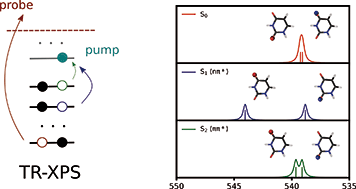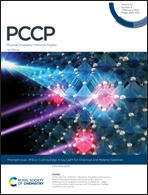Dyson orbitals within the fc-CVS-EOM-CCSD framework: theory and application to X-ray photoelectron spectroscopy of ground and excited states†
Abstract
We report on the implementation of Dyson orbitals within the recently introduced frozen-core (fc) core–valence separated (CVS) equation-of-motion (EOM) coupled-cluster singles and doubles (CCSD) method, which enables efficient and reliable characterization of core-level states. The ionization potential (IP) variant of fc-CVS-EOM-CCSD, in which the EOM target states have one electron less than the reference, gives access to core-ionized states thus enabling modeling of X-ray photoelectron spectra (XPS) and its time-resolved variant (TR-XPS). Dyson orbitals are reduced quantities that can be interpreted as correlated states of the ejected/attached electron; they enter the expressions of various experimentally relevant quantities. In the context of photoelectron spectroscopy, Dyson orbitals can be used to estimate the strengths of photoionization transitions. We illustrate the utility of Dyson orbitals and fc-CVS-EOM-IP-CCSD by calculating XPS of the ground state of adenine and TR-XPS of the excited states of uracil.

- This article is part of the themed collection: XFELs: cutting edge X-ray light for chemical and material sciences


 Please wait while we load your content...
Please wait while we load your content...